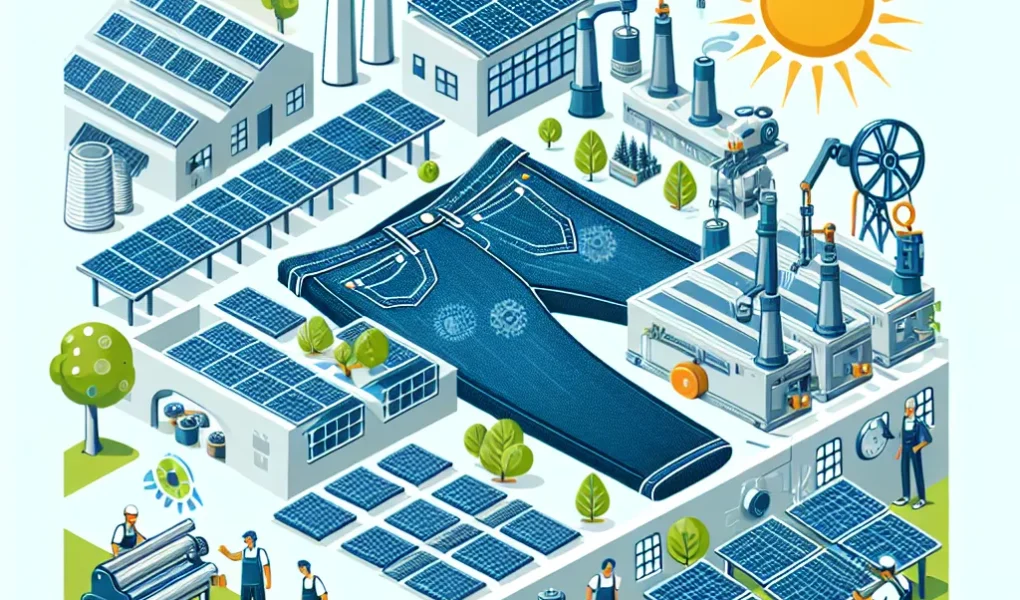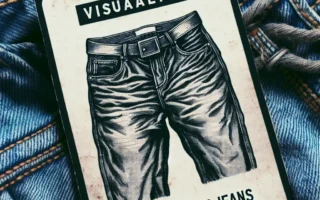The History of Denim: From Workwear to Wardrobe Staple
Denim has a rich history that dates back to the 18th century, where it was initially used as sturdy workwear for laborers due to its durability. The fabric was a go-to choice for miners, cowboys, and laborers due to its ruggedness and high resistance to wear and tear. Over time, denim evolved from being just a practical workwear fabric to becoming a fashion staple in wardrobes around the world. The iconic blue jeans became a symbol of rebellion and youth culture in the mid-20th century, gaining popularity beyond the realm of workwear.
As denim became a globally recognized fabric, the demand for jeans soared, leading to mass production and environmental repercussions. The classic denim production process involves significant water consumption, heavy chemical usage, and high energy consumption. This has contributed to environmental degradation in the form of water pollution, depletion of natural resources, and greenhouse gas emissions.
However, as the fashion industry shifts towards sustainability, denim production is undergoing a transformation. Brands are reimagining the traditional methods of jeans production by adopting eco-friendly practices such as using organic cotton, implementing water-saving techniques, and exploring innovative dyeing processes. Additionally, the concept of circular fashion is gaining traction, focusing on recycling and upcycling denim to minimize waste and environmental impact.
Understanding the historical journey of denim from its origins as workwear to its status as a wardrobe essential provides valuable insight into the evolution of jeans production and the necessity for sustainable practices. By combining innovative technology and a commitment to environmental consciousness, the denim industry is poised to redefine the future of jeans production and pave the way for a more sustainable fashion landscape.
The Ecological Footprint of Denim Manufacturing
Denim production has long been associated with a significant ecological footprint, prompting a critical reevaluation of sustainability in the fashion industry. The process of manufacturing denim involves high water consumption, extensive use of chemicals, and substantial energy consumption, thereby contributing to environmental degradation. The cultivation of cotton, a primary material in denim production, often involves the use of pesticides and significant water usage, further exacerbating its environmental impact.
In addition to the raw material cultivation, the indigo dyeing process, a hallmark of denim production, requires copious amounts of water and generates considerable wastewater. The discharge of untreated dyeing effluents into water bodies has detrimental effects on aquatic ecosystems, highlighting the far-reaching consequences of denim manufacturing.
To address these challenges, industry leaders and innovators are increasingly exploring sustainable alternatives in denim production. From adopting organic and recycled cotton to implementing water-saving dyeing technologies, the focus is shifting towards minimizing the ecological footprint of denim manufacturing. Furthermore, the concept of circular economy is gaining traction, emphasizing the need for recycling and reusing denim to reduce waste and resource consumption.
As consumer awareness of environmental issues grows, there is a mounting demand for ethically produced denim. Brands that prioritize sustainability and transparency in their supply chains are setting new standards for responsible denim manufacturing, signaling a positive shift towards a more eco-conscious industry.
Sustainable Innovations in the Denim Industry
In recent years, the denim industry has been undergoing a transformative shift towards sustainable innovations in response to the growing environmental concerns associated with jeans production. One of the key areas of focus has been on the development of eco-friendly materials to reduce the ecological footprint of denim manufacturing. This has led to the emergence of innovative fabric technologies that utilize organic cotton, recycled denim, and plant-based dyes, significantly reducing water consumption and chemical usage in the production process.
Furthermore, sustainable practices such as waterless and laser finishing techniques are revolutionizing traditional denim manufacturing methods, minimizing the environmental impact by conserving water and energy while eliminating the need for harmful chemical treatments. Additionally, advancements in garment finishing processes are enabling the production of high-quality, durable denim products without compromising on environmental responsibility.
Collaborations between fashion brands and textile manufacturers have also paved the way for sustainable denim production by integrating cutting-edge technologies like 3D weaving and automated cutting systems, leading to reduced material waste and optimized resource utilization. Moreover, the adoption of environmentally conscious supply chain management practices, such as ethical sourcing and fair labor standards, has become increasingly prevalent in the denim industry, fostering a more sustainable and socially responsible approach to jeans production.
As consumer demand for sustainable fashion continues to grow, the denim industry is poised to further embrace innovation and sustainability, driving positive change towards a more environmentally-friendly and ethical production landscape.
Consumer Choices: Balancing Style and Sustainability
When it comes to the environmental impact of denim, consumer choices play a crucial role in balancing style with sustainability. The fashion industry has long been associated with high environmental costs, and denim production is no exception. However, as awareness about the environmental impact of fashion grows, consumers are increasingly seeking out sustainable options without compromising on style.
One of the key considerations for consumers is the production process of the denim they purchase. Conventional denim production involves significant water consumption, chemical usage, and high levels of energy consumption. As a result, eco-conscious consumers are turning towards brands that have adopted sustainable production practices, such as using organic cotton, reducing water usage through innovative dyeing techniques, and implementing recycling programs to minimize waste.
Another aspect of consumer choices in balancing style and sustainability is the longevity of their denim purchases. Fast fashion has led to a culture of disposable clothing, where trends change rapidly, and garments are worn only a handful of times before being discarded. In contrast, opting for timeless, well-made denim and maintaining it properly can significantly reduce the overall environmental footprint of denim production, as it extends the lifespan of the garment and reduces the need for frequent replacements.
Furthermore, innovations in the denim industry, such as the use of alternative materials like recycled denim and the development of biodegradable dyes, offer consumers the opportunity to make sustainable choices without sacrificing the style and quality they desire. By prioritizing brands that embrace these eco-friendly advancements, consumers can contribute to a more sustainable future for denim production.
In conclusion, as consumers become more aware of the environmental impact of denim production, they are actively seeking out sustainable options while still balancing their desire for style. By supporting brands that prioritize sustainable practices, longevity, and innovative eco-friendly initiatives, consumers can play a pivotal role in reimagining sustainability in jeans production.
Circular Economy Solutions in Denim Production
Denim production has long been associated with significant environmental impact, from water consumption and chemical usage to the generation of textile waste. However, the concept of circular economy solutions is redefining the way denim is produced, offering a promising path towards sustainability in the fashion industry.
One of the key aspects of circular economy solutions in denim production is the implementation of innovative recycling processes. By using advanced technologies, old denim garments can be transformed into new fibers, reducing the reliance on virgin cotton and minimizing the overall environmental footprint of denim production. This shift towards a closed-loop system not only conserves resources but also mitigates the environmental damage associated with denim manufacturing.
Furthermore, the adoption of circular economy principles in denim production involves rethinking the design and manufacturing processes to prioritize longevity and reusability. By creating durable and timeless denim pieces, manufacturers can extend the product lifecycle and reduce the amount of denim waste destined for landfills. Additionally, incorporating modular and repairable elements into denim products enables consumers to easily mend and upgrade their clothing, contributing to a more sustainable and circular approach to fashion.
Moreover, the concept of circular economy solutions in denim production extends beyond the manufacturing stage and encompasses the end-of-life phase of denim garments. Implementing take-back programs and designing jeans with recyclability in mind can significantly decrease the amount of denim ending up as waste, fostering a more holistic and sustainable denim industry.
In conclusion, the integration of circular economy solutions in denim production holds tremendous potential for reimagining sustainability in the fashion sector. By embracing recycling technologies, promoting durable designs, and prioritizing end-of-life strategies, the denim industry can pave the way for a more environmentally conscious and circular approach to jeans production.

